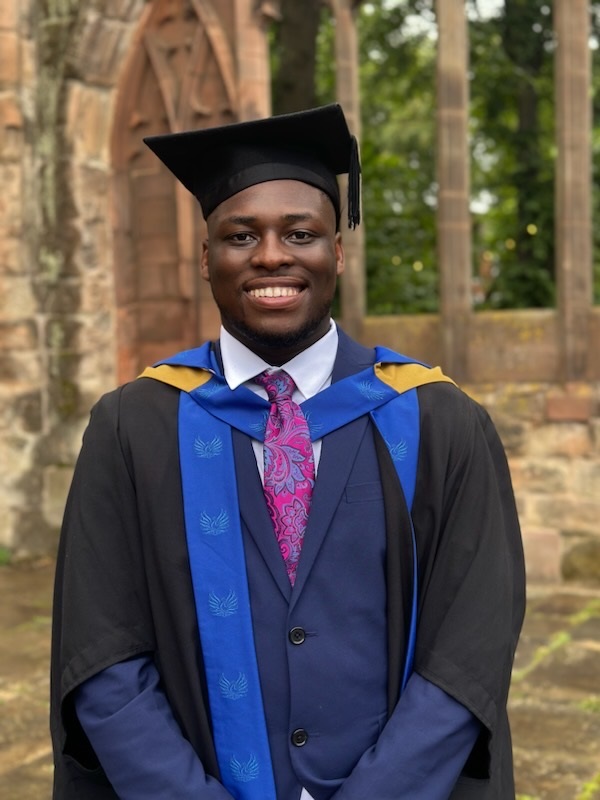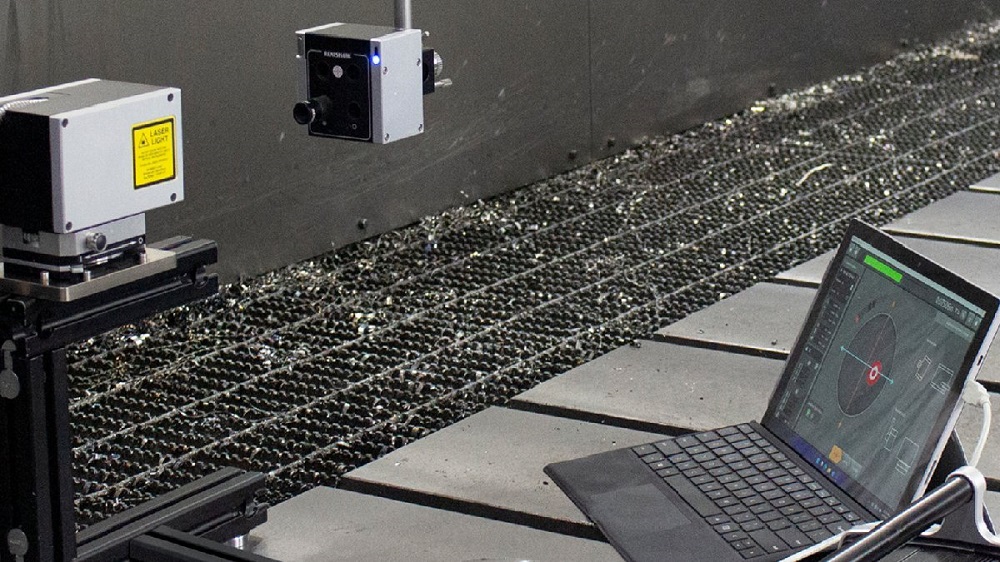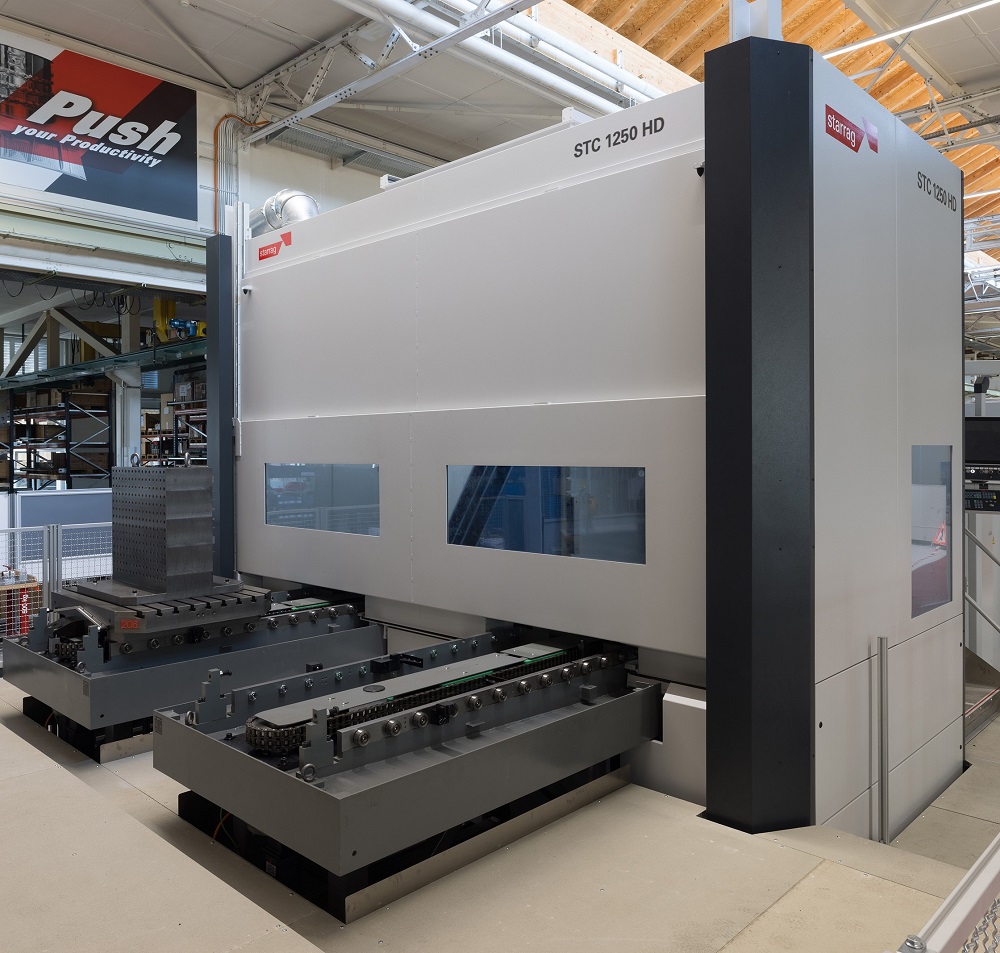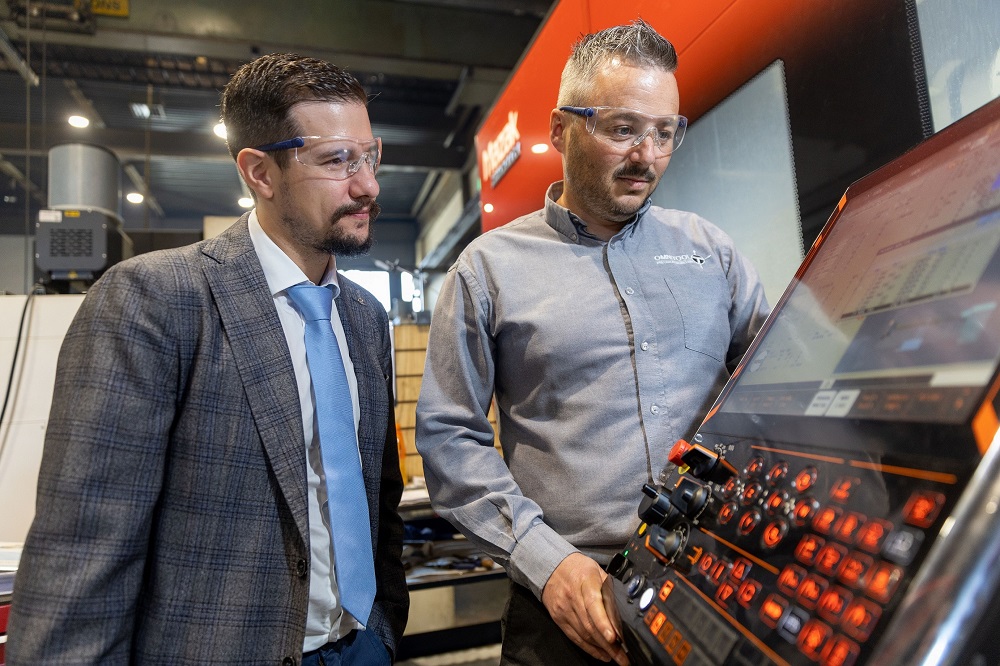‘Push Your Productivity’ was the theme at the recent Starrag Tech Days 2023, a manufacturing extravaganza open house at the company’s headquarters in Switzerland. Numerous machines and complementary manufacturing technology demonstrations highlighted how customers can benefit with shorter lead times and lower piece part costs from Starrag’s expertise in machining aerospace components such as blades, blisks, impellers, casings and structural parts.
More than 250 visitors from 17 countries witnessed a seemingly endless flow of manufacturing innovation to help them achieve bottom-line savings in production. Among the many highlights was the unveiling of the new ultra-rigid and robust titanium-cutting horizontal machining centre, the STC 1250 HD, the first machine in its class with hydrostatic guideways boasting zero friction/non-stick/slip in the X axis. The result a reduction in roughing times of more than 50% in some instances and dynamic, precise finishing of parts. In addition, the machine’s higher acceleration and jerk rates lead to more dynamic finishes, while the absence of micro-vibration in the guideways leads to more precise parts.
Visitors also got to see an Ecospeed F machining centre – the latest addition to the machines in Starrag’s Aerospace Competence Centre – with an integrated Sprint Z3 parallel kinematic machining headwhich, for example, contributes to savings in machining time for an interior aerostructure part from 14 hours to just three hours and 40 minutes.
Another highlight at the event was the simultaneous five-/six-axis machining of landing gear parts on large-capacity mills, focusing not only on improved cutting of complex shapes in difficult materials but also on the challenges of producing higher volumes (using automation) in new materials and, as always, under extreme price constraints.
Starrag Tech Days also hosted presentations of how the company’s machines can improve productivity. For example, visitors could learn how a Droop + Rein FOGS machining centre is meeting the challenges of machining and matching aluminium alloys and carbon-fibre parts to an accuracy of 55 µm over a machining envelope of 22 m3. And how a 65 mm bar-fed LX 021 machining centre can produce variable guide vane blades measuring 115 mm long with aerofoil lengths of 70 mm and chords up to 21 mm wide. The machine was performing, facing, profiling, mill finishing and groove turning in a cycle time of just 21 minutes.
Furthermore, a TTL software animation showed how the software can effect a blade repair at 20%-30% the cost of a new blade, while the presentations also revealed details of a new spindle drive unit, an 18,000 rpm HSK-100 for all-round metals machining.
A number of partners also took the opportunity to present complementary technologies. For instance, Siemens demonstrated its Sinumerik CNC system with digital-twin software that effectively creates a closed loop between digital design, machining simulation, CADCAM and post-processing. This capability not only minimises the programming of complex parts, but also eliminates costly material test cuts.
Caron Engineering showed how its Tool Adaptive Control system can run tools at up to 25% higher rates and extend tool life by up to 25% through process monitoring via sensors for power usage, vibration and coolant pressure/flow, for example.
Hexagon Metrology hammered home the ‘time costs money’ message while demonstrating its NC Measure machine tool probing/measurement/tool-setting expertise that integrates the results from a multi-sensor radio wave receiver. Interestingly, ultrasonic wall thickness measurement was shown to an accuracy of 10µm, ‘ignoring’ any work holding that may encroach. On-machine laser scanning can automatically inspect and compare workpieces against CAD models.
Live demonstrations showcased the capabilities of the new STC 1250 HD on titanium using porcupine, face and rigid milling tools, and how its 12-tonne column is easily moveable by hand. The machine is capable of reducing roughing times of structural parts by over 50%.
On one test part – a frame door forging made of Ti6A14V and measuring 80 mm deep, 300 mm wide and 1,220 mm long – demonstrated a 33% reduction in energy consumptiondue to reductions in the machine’s roughing and machining time.
With pallets of 1000 x 1250 mm capable of accommodating workpieces up to 2200 x 1950 mm, the machine has a torque rating up to 50,000 Nm, a 80 mm drive chain (compared with the traditional 63 mm) and it can achieve roughing cuts up to four times deeper in titanium than traditional machines, reports Starrag.
The in situ Ecospeed F 1540 machining centre is the smallest of the Ecospeed family but, like its stablemates, uses Starrag’s Sprint Z3 machining head to impressive effect. According to the company, the Ecospeed is unmatched at aluminium removal, hence the dramatic time saving of the aerostructure part from 14 hours to just three hours and 40 minutes.
Starrag has been meeting the challenges of landing gear machining since the early 90s and today utilises simultaneous multi-axis machining to produce highly accurate complex shapes in difficult materials, as well as STC and Heckert machining centres for smaller workpieces – the latter undertaking turning as well as milling.
The keynote address at the two-day event by Dr Matthias Lange from Premium Aerotec (formerly part of Airbus) not only highlighted the rising demand for passenger aircraft – forecast to be 40,000 new aircraft for delivery between 2022 and 2041 – but also pinpointed how this tier-one aerospace machinist is driving up sustainability in its own manufacture. This complements the engine manufacturers’ quest for fuel burn reductions of 20%-40% and, for example, improved end-of-life recycling and optimised noise and emissions.
The company annually produces around five million parts in 25,000 variants at different locations in Germany and Romania. It uses 21,000 cutting tools on its production lines of Starrag machining centres. Here,a total of 24machines include: Ecospeed machining centres with Z3 heads and integrated co-ordinate measuring machines processing batch products; stand-alone machines for urgent parts; seven machinesdedicated to titanium machining; and 11 multi-tasking turn-mill machines for rotational workpieces.
Lange focused on Premium Aerotec’s use of electricity (and solar panels) and said the highest energy use at the company was in machining, so the target is to reduce this by working closely with suppliers for improved milling routines, more effective use of coolant and improved tooling. Optimised feed rates and better process and tool wear monitoring will all contribute to savings via the consumption of less energy per part, he added.
For further information www.starrag.com

















